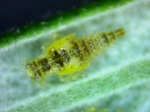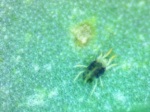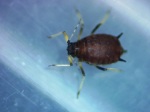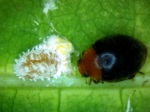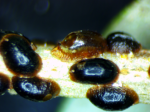Scouting and Managing Pests on your Indoor Herbs
Winter approaches, plants get moved indoors, and suddenly you find yourself engulfed in plants of all shapes and sizes. Aside from space, keeping plants indoors isn’t difficult. Plant growth will slow from reduced light and lower temperatures, but an issue often overlooked when bringing in plants resides in insects. Knowing and recognizing potential insect pests will help in the long run and prevent plant health from going downhill before spring arrives.
Herbs such as rosemary, sage, thyme, and spearmint are food to a few different insects. The insects most likely to be encountered on these plants include two spotted spider mite (Tetranychus urticae), sage leafhopper (Eupteryx melissae), and spittlebugs (Cercopidae). Although common, these insects often go unnoticed due to their small size and where they reside on the plant (underneath the leaves). Plants should be inspected upon entry so that a large population won’t thrive undetected and affect ornamental plant health. Each one of the insects listed can be treated with horticulture oil, or a homemade 2% solution of oil with warm soapy water. It is advised to test your solution on part of the plant to prevent any phytotoxicity before application is made to the entire plant. The spray should cause the foliage to be wet, but not have runoff.
Citrus plants will involve mostly sap sucking insects such as brown citrus aphids (Toxoptera citricida), hemispherical scale (Saisettia coffae), black scale (saissetia oleae), and citrus mealybug (Planoccoccus citri). These insects latch onto the plant and feed by inserting their mouth parts into the plant cells, leading to lack of vigor, leaf curl, and stunting. A byproduct of these insects feeding, called honeydew, can lead to black sooty mold forming. Beneficial insects such as ladybeetle larvae can serve as a biological control in addition to Cryptolaemus larvae. Beneficial use is more difficult during winter months for various reasons, so manually removing pests in addition to applying any oils previously mentioned above are a good plan of attack. Stay vigilant and look for these insects shown below.
